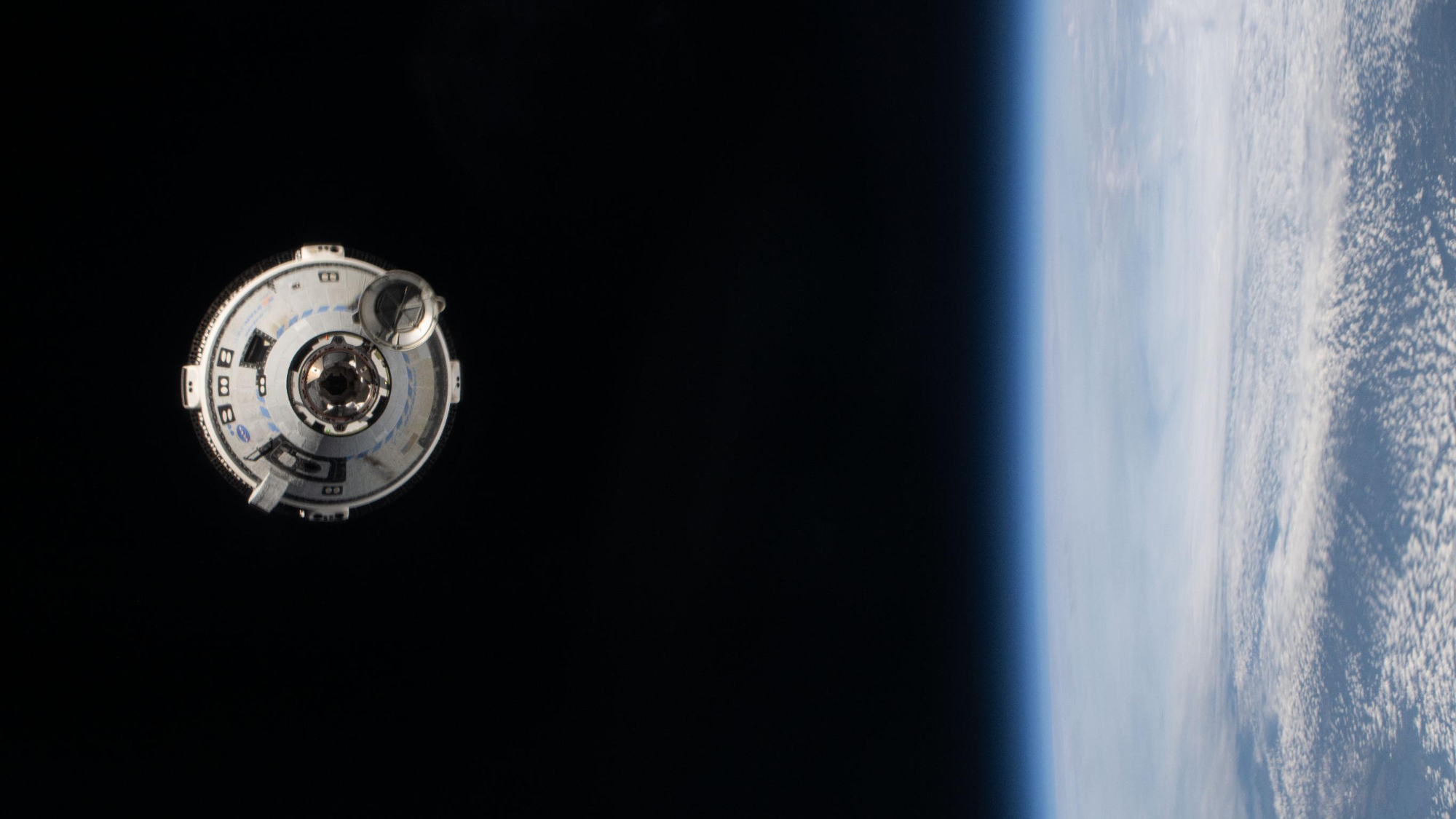'The spacecraft really reacted great:' NASA astronauts praise Boeing Starliner’s performance (video)
The spacecraft can "stop on a dime," according to NASA astronaut Butch Wilmore.
The first astronauts to fly Boeing's new Starliner vehicle have spoken in glowing terms of the spacecraft.
Starliner launched on June 5, with NASA astronauts Butch Wilmore and Suni Williams testing out the spacecraft's capabilities on the Crew Flight Test (CFT) mission to the International Space Station (ISS).
Williams and Wilmore spoke via video link from the ISS with NASA Administrator Bill Nelson, Deputy Administrator Pam Melroy and Associate Administrator Jim Free on Monday (June 10).

"The spacecraft was precise," said Wilmore, in response to a question from Melroy about the spacecraft's performance and handling testing. "We could stop on a dime, so to speak. [We] could put it exactly where we wanted and it would stay there."
Wilmore was describing how Starliner could adjust its position very precisely and quickly. Maintaining tight control over the spacecraft's position and orientation is essential for safety and mission success, especially during close-proximity operations such as docking at the ISS.
Williams also had praise for the spacecraft's performance. "I call it mooning the sun… we were trying to fine-tune where we would get the most power," Williams said, describing orienting Starliner's rear to allow the spacecraft's solar arrays to collect and absorb the most light and generate the most power.
"So if we didn't have any guidance and we had to do it ourselves, we could do it no problem. And the spacecraft really reacted great to even those big types of maneuvers like that."
Get the Space.com Newsletter
Breaking space news, the latest updates on rocket launches, skywatching events and more!
CFT was intended to spend about a week at the ISS, but its stay has now been extended to at least June 18. The extension will allow Wilmore, Williams and ground teams to continue performing checkouts on Starliner.
Some of these assessments will focus on the potential effect of helium leaks detected on Starliner. Helium is used to pressurize the capsule's fuel and oxidizer tanks, providing the pressure needed to feed propellants into the rocket engines.
CFT is the third spaceflight for Starliner, following uncrewed test flights toward the ISS in December 2019 and May 2022. Starliner failed to reach the orbiting lab on the first one but succeeded on the second.
Join our Space Forums to keep talking space on the latest missions, night sky and more! And if you have a news tip, correction or comment, let us know at: community@space.com.

Andrew is a freelance space journalist with a focus on reporting on China's rapidly growing space sector. He began writing for Space.com in 2019 and writes for SpaceNews, IEEE Spectrum, National Geographic, Sky & Telescope, New Scientist and others. Andrew first caught the space bug when, as a youngster, he saw Voyager images of other worlds in our solar system for the first time. Away from space, Andrew enjoys trail running in the forests of Finland. You can follow him on Twitter @AJ_FI.









